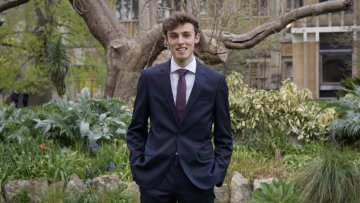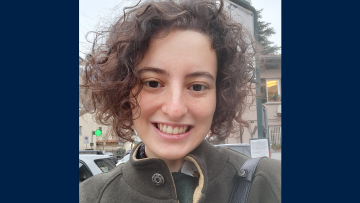17:00
Cancelled: An effective mixed André-Oort result
Abstract
Habegger showed that a subvariety of a fibre power of the Legendre family of elliptic curves is special if and only if it contains a Zariski-dense set of special points. I'll discuss joint work with Gal Binyamini, Harry Schmidt, and Margaret Thomas in which we use pfaffian methods to obtain an effective uniform version of Manin-Mumford for products of CM elliptic curves. Using this we then prove an effective version of Habegger's result.
SDEs and rough paths on manifolds
Abstract
I will begin by speaking about Ito SDEs on manifolds, how their meaning depends on the choice of a connection, and an example in which the Ito formulation is preferable to the more common Stratonovich one. SDEs are naturally generalised to the case of more irregular driving signals by rough differential equations (RDEs), i.e. equations driven by rough paths. I will explain how it is possible to give a coordinate-invariant definition of rough integral and rough differential equation on a manifold, even in the case of arbitrarily low regularity and when the rough path is not geometric, i.e. it does not satisfy a classical integration by parts rule. If time permits, I will end on a more recent algebraic result that makes it possible to canonically convert non-geometric RDEs to geometric ones.
Moments of the high order derivatives of CUE characteristic polynomials
Abstract
In this talk, I will firstly give asymptotic formulas for the moments of the n-th derivative of the characteristic polynomials from the CUE. Secondly, I will talk about the connections between them and a solution of certain Painleve differential equation. This is joint work with Jonathan P. Keating.
Symmetry underpins all physics research. We look for fundamental and beautiful patterns to describe and explain the laws of nature. One way of explaining symmetry is to ask: "what is the full set of operations I can do to my real-world experiment or abstract theory written on paper that doesn't change any physical measurements or predictions?'' There are simple symmetries we are perhaps already familiar with. For example, lab-based physics experiments usually don't care if you wait an hour to do the experiment or if you rotate your apparatus by 90 degrees.
DLA and related models, part II
Abstract
This will be a continuation of the talk from last week (9 May).
17:00
A world from a sheet of paper - Tadashi Tokieda
Starting from just a sheet of paper, by folding, stacking, crumpling, sometimes tearing, Tadashi will explore a diversity of phenomena, from magic tricks and geometry through elasticity and the traditional Japanese art of origami to medical devices and an ‘h-principle’. Much of the show consists of table-top demonstrations, which you can try later with friends and family.
So, take a sheet of paper. . .
Tadashi Tokieda is a professor of mathematics at Stanford. He grew up as a painter in Japan, became a classical philologist (not to be confused with philosopher) in France and, having earned a PhD in pure mathematics from Princeton, has been an applied mathematician in England and the US; all in all, he has lived in eight countries so far. Tadashi is very active in mathematical outreach, notably with the African Institute for Mathematical Sciences. You'll find him on Numberphile's YouTube channel.
Please email @email to register.
The Oxford Mathematics Public Lectures are generously supported by XTX Markets.



